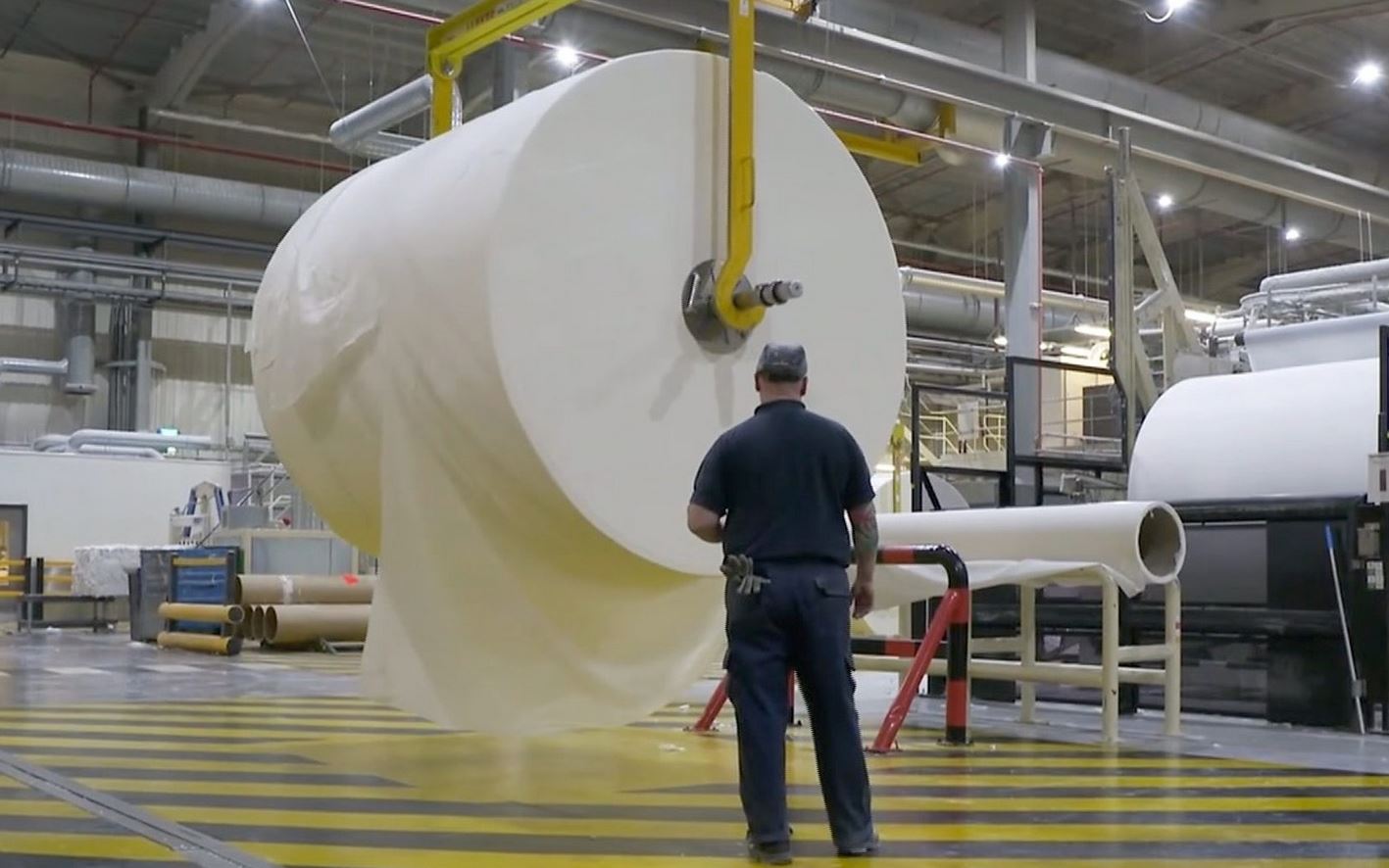Toilet paper is an essential commodity that plays a significant role in our daily lives, yet have you ever wondered about the intricate process behind its manufacturing? The creation of this humble yet indispensable product involves an intricate journey through the world of paper manufacturing. In this guide, we will unravel the story behind toilet paper manufacturing, exploring the various steps involved in transforming raw materials into those soft rolls that bring us comfort and convenience.

At its core, toilet paper manufacturing follows a process similar to that of other paper products. The journey begins with the selection of suitable raw materials, primarily wood fibers from trees. These fibers undergo a rigorous production cycle, where they are first disintegrated into a pulp. This pulp is then combined with water to create a diluted mixture, forming the backbone of the paper-making process. To enhance the strength and softness of the end product, additives such as sizing agents and fillers are often incorporated into the mixture.
Next comes the formation stage, where the diluted pulp blend is dispersed onto a continuous moving wire mesh. As the water drains away, the fibers start to interlock, resulting in the formation of a sheet. This sheet is then subjected to pressing, where excess water is expelled through a series of rollers. The pressing stage also helps in achieving the desired thickness and density of the paper. Following this, the sheet undergoes drying through the application of heat, further removing any residual moisture.
Once the paper sheet is completely dry, it is ready for the next crucial step – converting it into those familiar toilet paper rolls. This conversion process involves various cutting and embossing techniques to shape the paper into the ideal size and texture. The rolls are then perforated and wound onto cardboard cores, ready for packaging and distribution to our homes and businesses.
Toilet paper manufacturing may seem like a straightforward process, but it encompasses carefully calculated steps to ensure the final product meets our expectations of quality and comfort. With an understanding of the intricate journey from wood fibers to soft rolls, we can appreciate the craftsmanship and engineering that goes into creating this essential part of our daily lives.
History of Toilet Paper
Toilet paper has a fascinating history that dates back centuries. In ancient times, people relied on a variety of materials to clean themselves after using the restroom. In early civilizations, leaves, grass, and even corn cobs were commonly used for this purpose. While this may not sound particularly pleasant, it was the best option available at the time.
As societies advanced, so did the methods of maintaining personal hygiene. The ancient Romans, for instance, utilized a sponge attached to a stick known as a "tersorium." This tool was soaked in saltwater and shared among members of the community. Although it might seem unhygienic by today’s standards, it was a significant improvement compared to previous methods.
Fast forward to the 6th century, and we find evidence of a different approach to cleanliness. In China, the invention of paper was a groundbreaking moment in history, and it wasn’t long before people began using paper for personal hygiene. The ancient Chinese would tear off small, rectangular pieces of paper, puncture a hole in one corner, and then string them together for easy accessibility.
Despite these early uses of paper, it wasn’t until the 19th century that toilet paper as we know it began to take shape. In 1857, an American named Joseph Gayetty introduced the first commercially available toilet paper. It consisted of individual sheets infused with aloe, and they were sold in packages. While this invention was a step in the right direction, it was still a far cry from the mass-produced rolls we use today.
The history of toilet paper is a testament to innovation and the continuous improvement of everyday products. Over time, toilet paper manufacturing techniques have advanced, with various materials and technologies contributing to the wide range of options available in the market today. From simple leaves and grass to soft, quilted rolls, the evolution of toilet paper is an intriguing journey that reflects our commitment to personal hygiene and comfort.
Toilet Paper Manufacturing Process
Toilet paper manufacturing involves a series of steps to transform raw materials into the soft and essential product we use every day. The process begins with the sourcing of the primary material for toilet paper production: paper pulp. Paper pulp is obtained by breaking down various types of wood and mixing them with water to form a slurry.
Once the paper pulp is ready, it goes through a refining process to remove any impurities or unwanted particles. This ensures that the final product is smooth and free from any blemishes. The refined pulp is then bleached to achieve the desired level of whiteness.
Custom Toilet Paper
After the bleaching process, the paper pulp is ready to be transformed into toilet paper. It is fed into large machines called paper machines, where it is spread out evenly onto a moving wire mesh. As the pulp moves along the wire mesh, excess water is drained out, and the fibers start to bond together, forming a continuous sheet of paper.
The next stage involves pressing the paper to remove any remaining moisture and increase its density. This is done by passing the sheet through a series of rollers that apply pressure. Once the desired thickness is achieved, the paper is wound onto large rolls.
The complete toilet paper rolls are then cut into smaller rolls or sheets, depending on the packaging requirements. Finally, the finished toilet paper rolls or sheets are packaged, ready to be shipped and distributed to stores and households, where they will serve their much-needed purpose.
This marks the end of the section on the toilet paper manufacturing process. Stay tuned for the next section, where we delve into the fascinating history of this everyday product.
Sustainability and Innovations in Toilet Paper Manufacturing
Toilet paper manufacturing has come a long way in terms of sustainability and innovations. Manufacturers have recognized the importance of minimizing their environmental impact and have made significant efforts to implement sustainable practices throughout the production process.
One key area of focus has been on sourcing raw materials responsibly. Many toilet paper manufacturers now opt for recycled paper as a primary input. By utilizing recycled fibers, they are able to reduce the demand for virgin wood pulp and minimize deforestation. Additionally, the use of recycled paper reduces the amount of waste that ends up in landfills, promoting a circular economy.
Another important aspect of sustainability in toilet paper manufacturing is the use of eco-friendly production processes. Advancements in technology have enabled manufacturers to adopt more efficient methods that consume less energy and water. These innovations not only reduce the carbon footprint of production but also help conserve valuable natural resources.
Toilet paper manufacturers have also been exploring alternative materials to traditional paper. Some companies have started using bamboo, a fast-growing and renewable resource, as a sustainable alternative to wood pulp. Bamboo has the advantage of requiring less water and pesticides to grow, making it an environmentally friendly choice.
Furthermore, packaging has become a significant area of focus for sustainability initiatives. Manufacturers are increasingly using biodegradable or recyclable packaging materials to reduce waste and minimize their environmental impact. This shift towards sustainable packaging aligns with consumer demands for more eco-friendly options.
In conclusion, sustainability and innovation are driving forces in the toilet paper manufacturing industry. Through responsible sourcing, eco-friendly production processes, the exploration of alternative materials, and sustainable packaging, manufacturers are working towards a greener and more environmentally conscious future.




